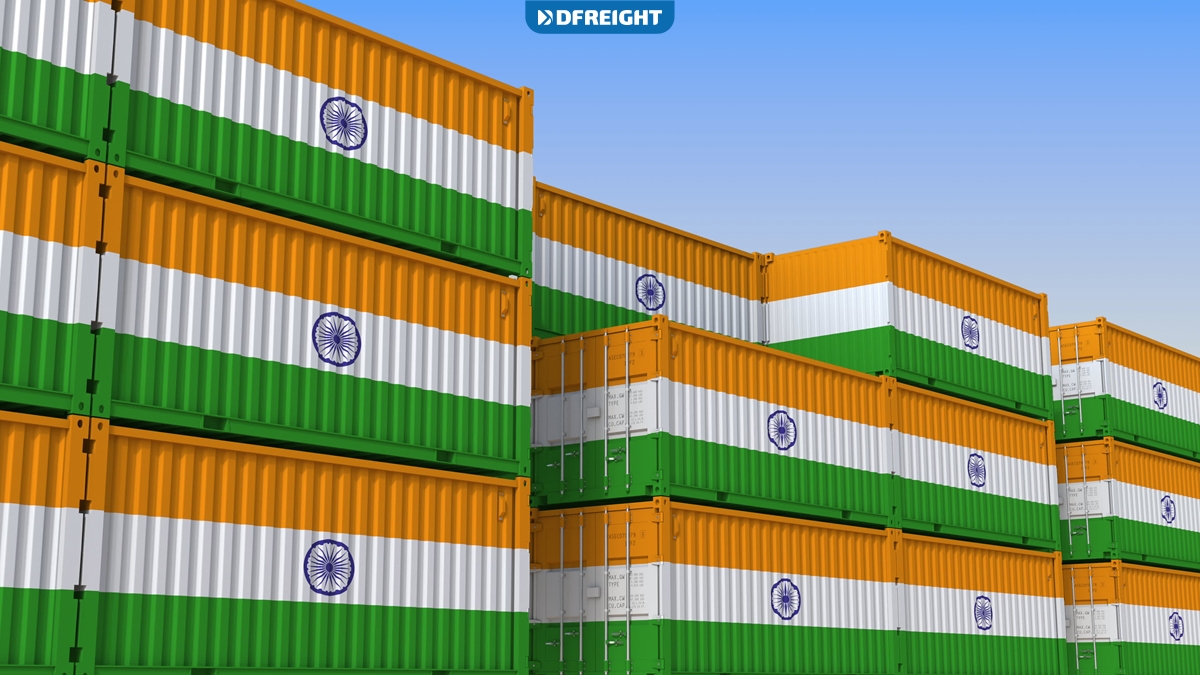Exporting and importing are two very important aspects of international trade. India is a very important player in the global market, and its exports and imports play a significant role in the country’s economy. In this blog post, we will discuss the procedures of import and export in India in detail.
DFreight is a leading freight forwarder in India with vast experience in import and export procedures. We offer our clients a complete range of services, including shipping, logistics, customs, and insurance. We have a team of experts who can guide you through the entire process of import and export in India. Get a free quote today to learn more about our services.
Table of Contents
The Basic Procedures of Import and Export in India
India is a vast country with a population of over 1.3 billion people. It is also a country with a rich and diverse history, culture, and economy. Businesses have many opportunities to export from India and import popular goods and services to India.
The process of import and export in India can be a complex one. Several procedures and regulations must be followed to ensure compliance with Indian law.
- The first step in the process of import and export in India is to obtain the necessary licenses and permits from the Indian government. These licenses and permits will vary depending on the goods or services exported or imported.
- Once the licenses and permits have been obtained, the next step is to find an Indian port that can accommodate the shipment of goods. There are several ports in India, each of which has different capabilities and capacities.
- Once the port has been selected, the next step is to arrange for the transportation of the goods to the port. This can be done by land, sea, or air.
- Once the goods have arrived at the port, they will need to clear customs. This process can be complicated and time-consuming.
- Once the goods have cleared customs, they must be delivered to the final destination. This can be done by several methods, including truck, rail, or ship.
Import and export in India can be complex and time-consuming. However, it is essential to follow the proper procedures to ensure compliance with Indian law.
The Documents Required for Import and Export in India
Import and export in India can be complicated and time-consuming. This is because several documents are required for import and export in India.
- Invoice: The invoice must include the exporter’s name and address, the consignee’s name and address, a description of the goods being exported, the quantity of the goods, the value of the goods, and the invoice date.
- Packing list: The packing list must include the name and address of the exporter, the name and address of the consignee, a description of the goods being exported, the quantity of the goods, the value of the goods, the net weight of the goods, the gross weight of the goods, the dimensions of the goods, and the date of the packing list.
- Bill of lading: The bill of lading must include the name and address of the exporter, the name and address of the consignee, a description of the goods being exported, the quantity of the goods, the value of the goods, the net weight of the goods, the gross weight of the goods, the dimensions of the goods, the port of loading, the port of discharge, and the date of the bill of lading.
- Certificate of origin: The certificate of origin must include the name and address of the exporter, the name and address of the importer, the name of the country of origin of the goods, and the date of the certificate of origin.
- Insurance policy. The insurance policy must include the name and address of the insurer name and address, the policyholder’s name, the sum insured, the premium, the period of insurance, the date of the policy, and the policy number.
- Shipping order: The shipping order must include the name and address of the exporter, the name and address of the consignee, a description of the goods being exported, the quantity of the goods, the value of the goods, the net weight of the goods, the gross weight of the goods, the dimensions of the goods, the port of loading, the port of discharge, the date of the shipping order, and the shipping order number.
- Consular invoice: The consular invoice must include the name and address of the exporter, the name and address of the importer, the name of the country of origin of the goods, the quantity of the goods, the value of the goods, the net weight of the goods, the gross weight of the goods, the dimensions of the goods, the date of the consular invoice, and the invoice number.
- Certificate of Analysis: The Certificate of Analysis must include the name and address of the exporter, the name and address of the importer, the name of the country of origin of the goods, the quantity of the goods, the value of the goods, the net weight of the goods, the gross weight of the goods, the dimensions of the goods, the port of loading, the port of discharge, the date of the Certificate of Analysis, and the Certificate of Analysis number.
- Letter of Credit: The Letter of Credit must include the name and address of the exporter, the name and address of the importer, the name of the country of origin of the goods, the quantity of the goods, the value of the goods, the net weight of the goods, the gross weight of the goods, the dimensions of the goods, the port of loading, the port of discharge, the date of the Letter of Credit, and the Letter of Credit number.
- Bill of Exchange: The Bill of Exchange must include the name and address of the exporter, the name and address of the importer, the name of the country of origin of the goods, the quantity of the goods, the value of the goods, the net weight of the goods, the gross weight of the goods, the dimensions of the goods, the port of loading, the port of discharge, the date of the Bill of Exchange, and the Bill of Exchange number.
- Shipping Manifest: The Shipping Manifest must include the name and address of the exporter, the name and address of the importer, the name of the country of origin of the goods, the quantity of the goods, the value of the goods, the net weight of the goods, the gross weight of the goods, the dimensions of the goods, the port of loading, the port of discharge, the date of the Shipping Manifest, and the Shipping Manifest number.
These are just a few documents required for import and export in India. The process can be complicated and time-consuming, but it is important to ensure that all necessary paperwork is in order before beginning the process.
Conclusion
Import and export are two very important aspects of international trade. India is a very important player in the global market, and its exports and imports play a significant role in the country’s economy. In this blog post, we have discussed India’s export and import procedures in detail. We hope that this blog post has been helpful for those who are planning to export or import goods from India.
What is the process of importing goods into India?
The process of importing goods into India involves obtaining an import license from the Indian government and clearing the goods through customs.
What are the documents required for import into India?
The documents required for import into India include a bill of lading, commercial invoice, and packing list.
What are the import duties and taxes levied on goods imported into India?
The import duties and taxes levied on goods imported into India vary depending on the type of goods imported.
What are the restrictions on importing goods into India?
The restrictions on importing goods into India include items that are banned from being imported, such as weapons and narcotics. In addition, there might be restrictions on commodities that are imported from specific countries, such as shipping to India from UAE. Particular items may need additional documentation or permits prior to their shipment. All imported goods must adhere to Indian customs laws and regulations.
What are the export charges from India to Dubai?
The exact export charges from India to Dubai will depend on the specific product being shipped, the shipping method chosen, and the volume of the shipment. Generally, export charges from India to Dubai include applicable customs duties and taxes, shipping and handling fees, and other related charges.














